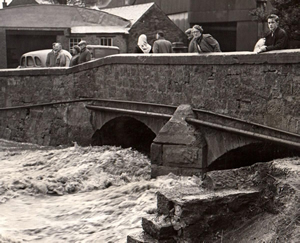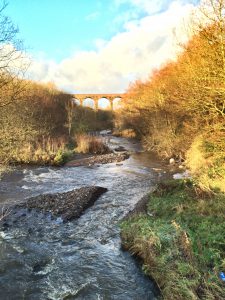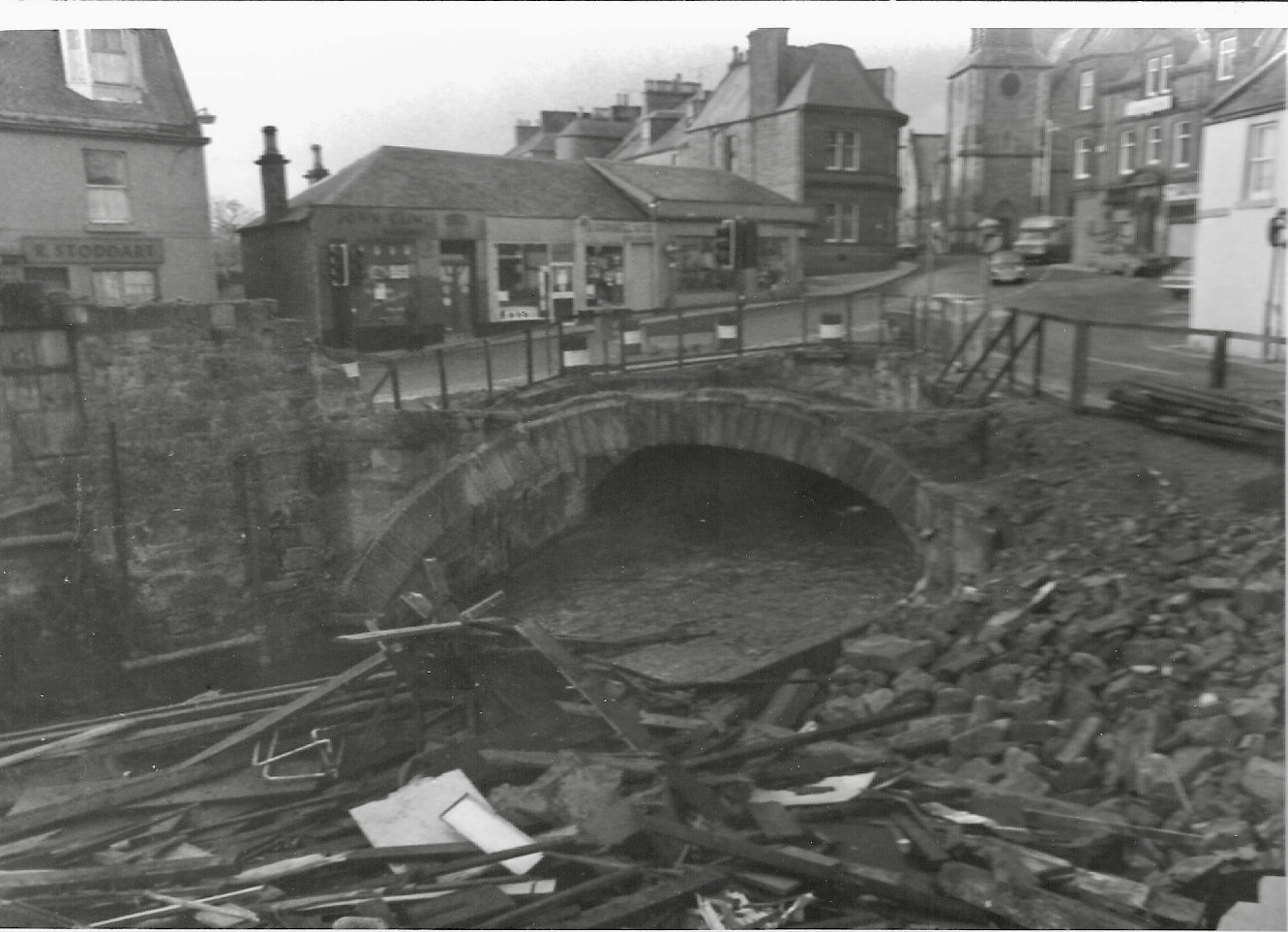The original Stepends Ford was bridged over in 1753 by a two-span brig which caused a serious accident in which 4 men and 3 boys were killed when an arch collapsed.
The present brig spanning the Lugar Water at the Congregational Church on Auchinleck Road went out to tender in April 1861 and is built in red sandstone with a single span of 64 feet. Contractors were A Gibson of Auchinleck and A Murdoch of Cumnock. There was a temporary wooden brig built as the old brig was taken down but the heavy storms in August and September of that year washed away the wooden brig, parts of the new stone brig and dislodged the crane that was being used in the construction. After a further accident with the arch partially collapsing, the new brig finally opened in 1864. It was widened in 2006 to accommodate a wider road and two pavements.
From Warrick’s the History of Old Cumnock 1899
In the year 1753 a bridge was thrown over the Lugar at Stepends. In all likelihood, it was the first which was built. It met, however, with an untimely end, and brought sudden death to a number of workmen engaged in its construction. The incident is told in the Scots Magazine of that year. “On the 8th August several workmen employed in building a bridge over the Lugar at Cumnock in the shire of Air, in order to shelter themselves from a heavy shower of rain, went in under a new finished arch from which the cumb or timber arch had been taken away the day before. All of a sudden, the arch fell; by which four men and four boys were killed, three had their legs broken, several others were hurt, and a horse was killed. This is thought to have been occasioned by the arch being too low. It was fifty-five feet wide and had but eight feet of spring.” It is somewhat singular that when the present bridge was being constructed over the Lugar at the same place, an accident of a similar nature took place, though happily without loss of life.



 Spans the Glaisnock Water at Glaisnock Street and Tower Street, in a spot called the Gorbals. This wide brig also replaced an earlier one in the mid 1800s and is almost invisible as Glaisnock street passes straight over it and several shops are built over the west side. The brig was partially re-built, widened and strengthened in December 1977. The sandstone span can still be seen from the shopping precinct and the two smaller modern brigs, the Spittin’ Brigs just upstream.
Spans the Glaisnock Water at Glaisnock Street and Tower Street, in a spot called the Gorbals. This wide brig also replaced an earlier one in the mid 1800s and is almost invisible as Glaisnock street passes straight over it and several shops are built over the west side. The brig was partially re-built, widened and strengthened in December 1977. The sandstone span can still be seen from the shopping precinct and the two smaller modern brigs, the Spittin’ Brigs just upstream.
